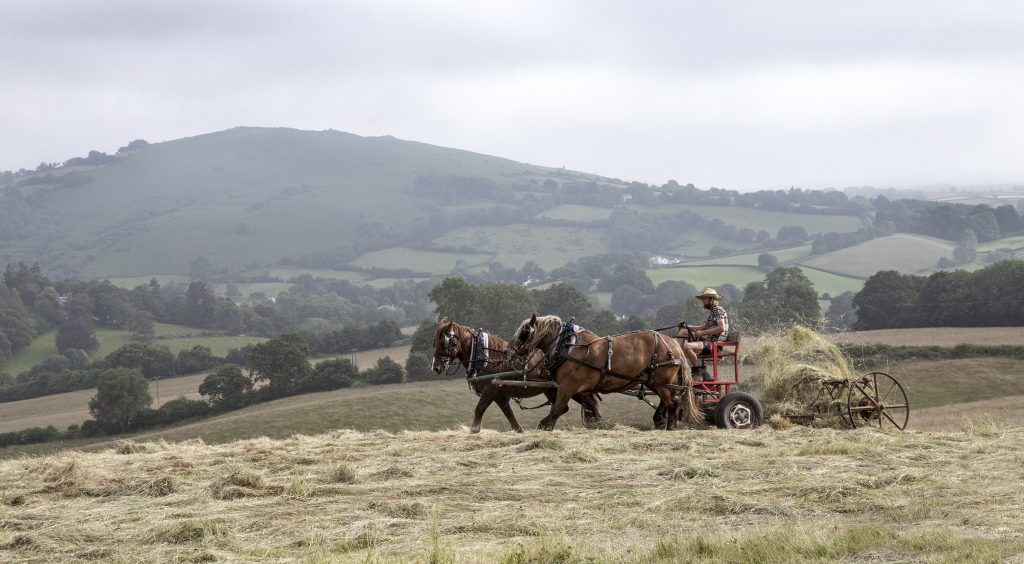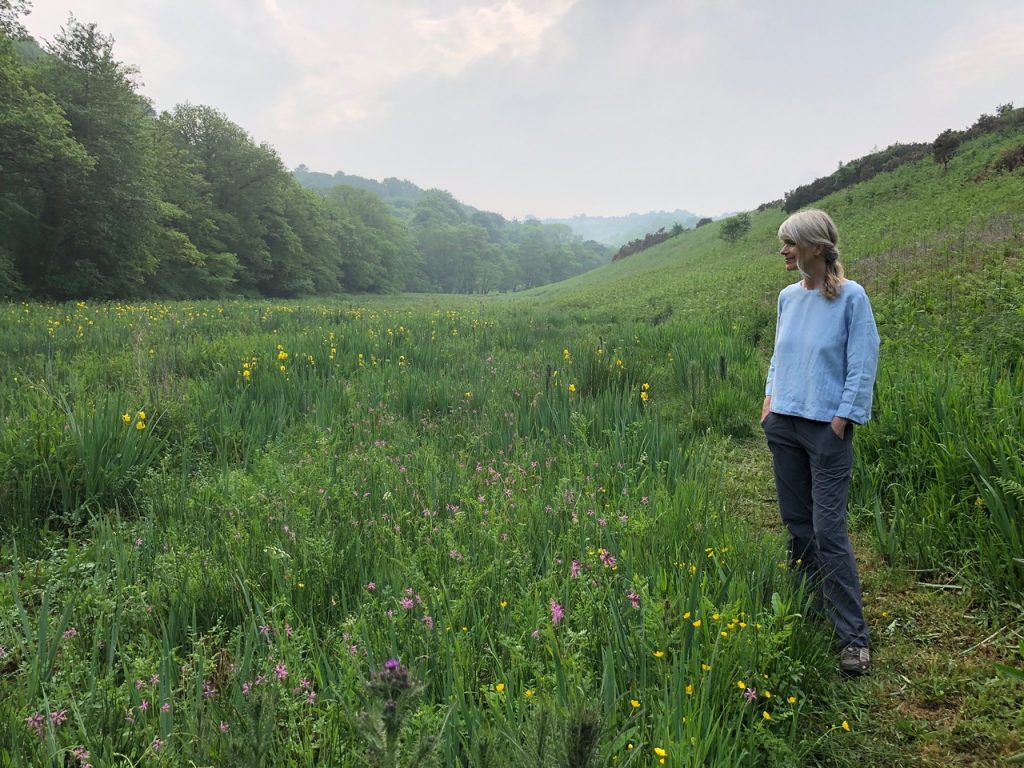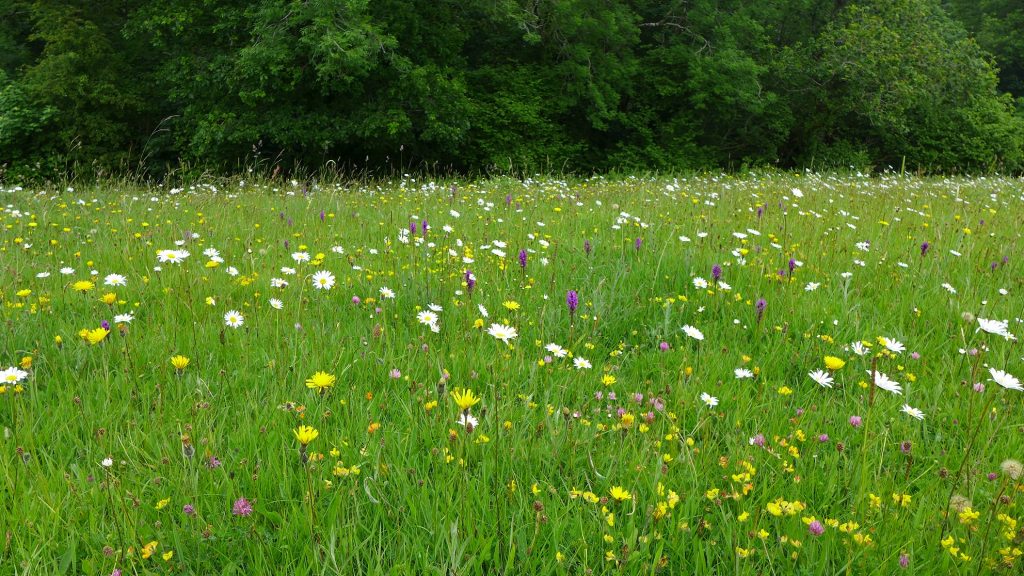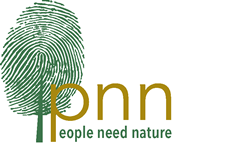
After the last 12 months, let’s look for positives. Has the pandemic helped us develop effective ways to conserve nature and engage people with the natural world?
Perhaps a growing movement of wildflower meadow-makers in Devon, using the umbrella name ‘More Meadows’ has achieved this, with a new online forum for meadow-makers, a number of free Zoom talks from expert speakers and a series of short videos on meadow wildlife produced in the last 12 months.
The lockdowns of the Covid era have led to a focus on ‘households’, creating a challenging context for maintaining any kind of community of individuals, let alone groups who are focused on wildlife and habitat loss and on working together to restore nature.
The More Meadows concept grew from a group of individuals concerned about the nature crisis coming together to work collaboratively to make changes for wildlife on their own patch. Key to their success in recent years was the creation of an inclusive community for sharing information and enthusiasm, with everyone welcome no matter their level of nature conservation knowledge or the size of their land, meaning everyone could feel they had a part to play in creating a nature recovery network close by.
Could such a group continue successfully in the midst of a pandemic? And given the need for such activity to happen more widely, could online versions of the meadow-makers community even spread during Covid?
The roots of this story began on Dartmoor back in 2015. A group of local residents concerned about the declines in wild plants and wildlife over recent decades shared a desire to conserve, restore and create wildflower-rich grassland on land they owned within the national park.
Following up her initial idea, meadow enthusiast Donna Cox organised a talk at a village hall (remember those?) by ecologist and author George Peterken: more than 130 people attended. Due to the evident enthusiasm for meadows she then co-founded a community group, Moor Meadows, allowing landowners and gardeners to share practical support and advice on managing haymeadows, wet meadows and other botanically diverse grasslands, and on turning species-poor fields and paddocks into wildflower meadows.

Moor Meadows built up over five years of both online and in-person activity. An email exchange, which has grown to more than 400 members, and a Facebook group were used for sharing advice and learning about meadows. Each year, opportunities were developed for sharing green hay and seed gathering by hand, while Open Meadows events, public talks with expert speakers and practical skills workshops were held on Dartmoor meadows sites.
In total, 1,189 acres of wildflower-rich meadows are now in good management by the original group’s 800-plus members. New members are encouraged to add their meadow – whatever its size – to the online Meadows Map, so this growing nature recovery network is visible to all.
Some sites are very small, including garden mini-meadows, encouraging orchids in the front lawns of South Brent, or single-acre meadows in churchyards like St Mary’s at Throwleigh, near Chagford . At the other end of the scale the 78 acres of species-rich meadows at Deer Park Farm, near Chudleigh in the Teign valley, have won a national meadow-making award from Plantlife.
While the majority of these sites were within the national park, 90 of them were elsewhere in Devon or over the county boundary in Cornwall. So, it was clear there was an appetite for meadow-making beyond Dartmoor.
Thanks to a grant from the Devon Environment Foundation in October 2020, an expansion could be planned, using the Moor Meadows community group model to inspire local meadow-makers groups elsewhere under the name More Meadows – alongside a more flexible and accessible model of online support.
The first fruit of the new funding came in the form of the Meadow-Makers’ Forum, an online resource for all meadow-makers. The forum is aimed both at people who currently manage wildflower meadows and anyone who wants to create wildflower-rich grassland of any size, anywhere in Devon or in neighbouring counties, either on their own land or on village green spaces and road verges. Users can find or share resources and advice on managing a meadow – including where to source wildflower seeds – and find help identifying the wild plants and creatures in their meadows. There are also opportunities to join or even start up local groups of meadow makers. The forum can be found at https://forum.moremeadows.org.uk
With more than 250 new members on the Meadow-Makers’ Forum in the two months since its launch, new More Meadows local groups have been formed, including in West Devon & Torridge (open to meadow-makers on the Cornish side of the River Tamar), the Blackdown Hills, East Devon, two groups in the river valleys of South Devon, with an Exmoor group in development too.
This spread of knowledge and support for the creation or restoration of wildflower meadows in Devon has happened without a single face-to-face meeting.
To engage even more people online with the wildlife of well-managed meadows, Moor Meadows organised a series of online talks by authors and conservation experts. Where previous events had been held in summer on Dartmoor meadows, the winter talks could reach a wider audience, with presentations by eminent bumblebee scientist Dave Goulson and by former BBC Springwatch producer and author Stephen Moss attracting 1,200 online attendees.
As government restrictions ease, summer 2021 should see the kind of scything workshops and open meadows events with guided walks through wildflower-rich grassland that were organised by Moor Meadows in pre-Covid times.

But the enforced focus on our own land and gardens – and on the patches of green within walking distance of our homes – during the lockdowns of the last year have combined with the increasing urge to find forms of community online to give people with a desire to improve land for wildflowers and wildlife both an impetus to get involved and a platform for receiving support.
This is what More Meadows has provided. Creating a nature recovery network isn’t being left to conservation organisations. Wildlife needs more community groups like this – and if they can form during the winter of a pandemic then other obstacles to nature’s recovery can surely be surmounted too.
More meadows will mean more botanically diverse grasslands, more sources of nectar for pollinators, more prey for bats and insectivorous birds. Both wildlife and people will benefit if More Meadows continues its flying start as we emerge from our year in a Covid cocoon.
Links for further info
- The Meadow-Makers’ Forum is free to join at https://forum.moremeadows.org.uk
- A map of meadows managed by Moor Meadows members can be seen on https://moormeadows.org.uk/map
- Stories of individual meadow-makers can be read on https://moormeadows.org.uk/me-and-my-meadow/
- The next online talk organised by Moor Meadows is entitled How to Create a Meadow, with Plantlife’s Meadow Adviser, Matt Pitts. The event is free but places must be registered at https://www.eventbrite.co.uk/e/how-to-create-a-meadow-tickets-140971831543

Comments are closed.